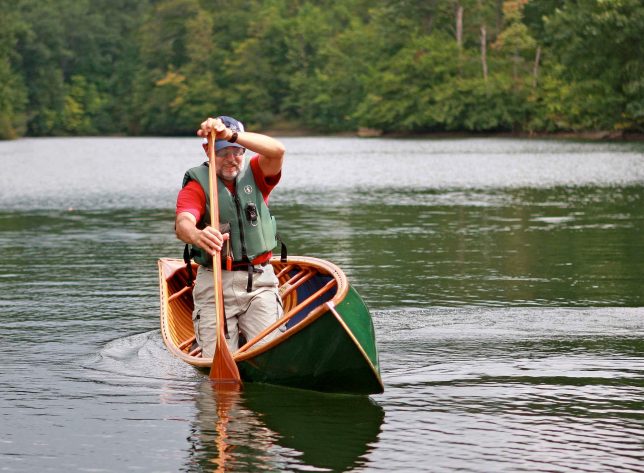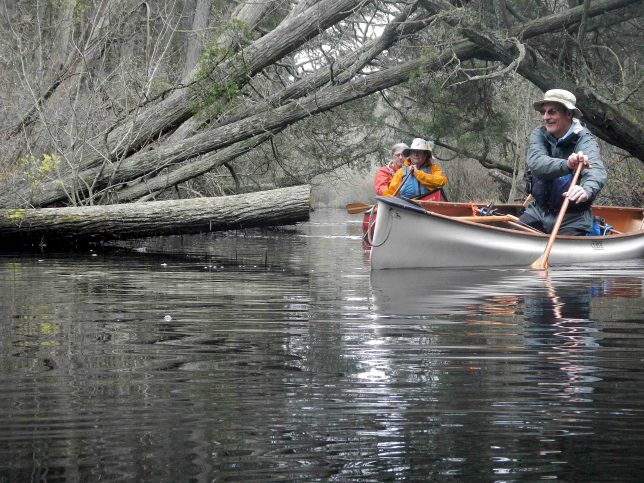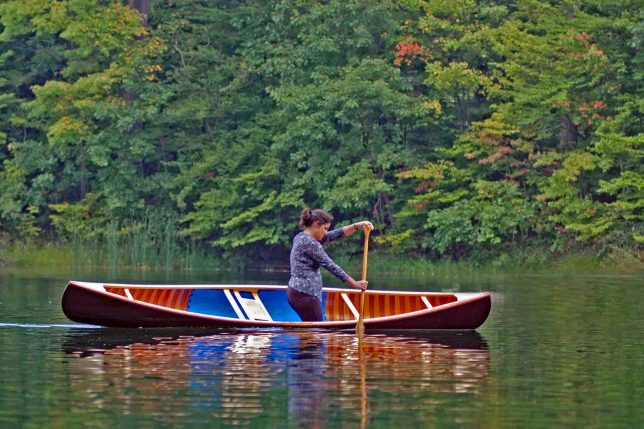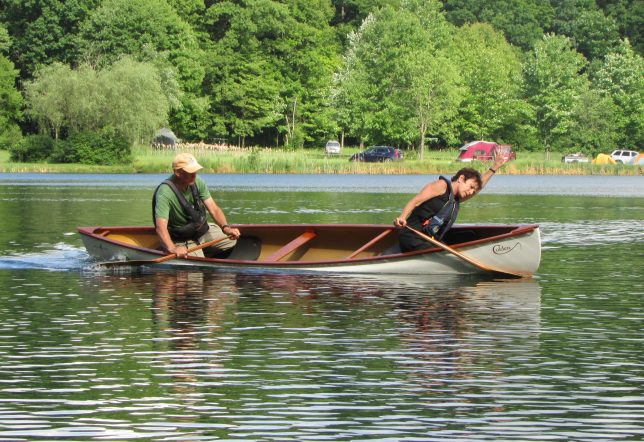[or you might say, A Pitch for Heeling Part 3…]
By Marc Ornstein
In a previous article (A Pitch For Heeling) I discussed how heeling the canoe (tipping the canoe to one side or the other) allows it to turn more easily. In this article, I’ll discuss the direction of the heel – that is to say, either toward or away from the turn direction – and why that makes a difference.
First, some terms need clarification:
Heeling – Refers to tipping the canoe to either side. Heeling toward or into the turn means heeling toward the direction of the turn, much like the way you lean a bicycle into a turn. Heeling away or out of the turn means heeling in the opposite direction of the turn. In other words, if you are turning left and also heel on the left side, you are heeling into the turn. If you are turning left and heeling on the right side then you are heeling away or out of the turn. I’ll try to avoid terms such as “on side”, “off side”, “paddle side” etc. because such terms can be confusing in this context. For our purposes here the side of the canoe the paddle happens to be on is not particularly important. We’re speaking here of hull dynamics.
Carving – Refers specifically to heeling away from or out of the turn. Think of carving as being a more particular form of heeling.
Heeling in either direction to some extent frees the stems of the canoe, shortening the effective waterline and allowing the canoe to turn more easily. Heeling away from the direction of the turn (carving) will cause the canoe to turn more sharply and with a bit less resistance in the stern, where most of the steering takes place. All other things being equal, less paddler energy will have been expended and more of the canoe’s own momentum will have been conserved and so is available to be applied to whatever travel or maneuver comes next.
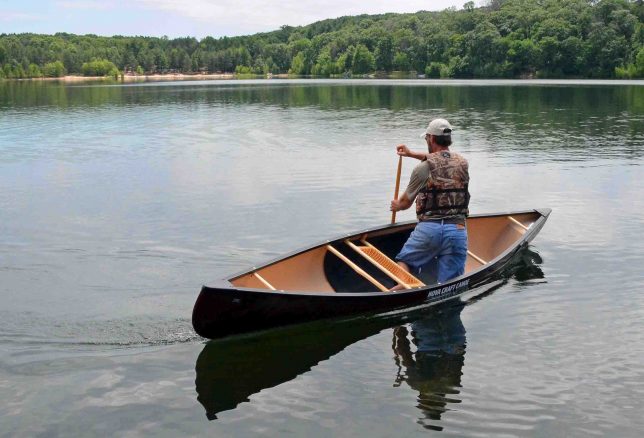
Why, you may well ask, should heeling away from the turn (carving) be more efficient than heeling into the turn? From a technical standpoint, “[At the bow] the heeled down side intersects the water at a greater angle than the up side, and deflects the leading stem towards the side of less resistance.” (From the Freestyle Instruction Manual Ch. 4 Pg. 6 Copyright 1995 CEW). The stern is of course also affected. The angle that the now heeled stern presents to the water is relatively low (compared to when the canoe is heeled into the turn) which allows it to more easily plane, or slide if you will, over the water, as opposed to having to displace it, and this saps less of the canoe’s momentum. We refer to this effect as the stern “skidding around the bow”.
A simplified way of looking at it is to picture the shape of the waterline when the canoe is heeled. As you can see by comparing illustrations 1 and 2 the heeled down side presents a sharper curve to the water than the heeled up side. You can visualize why the canoe would want to turn more sharply away from the heel.
Illustration 1

Illustration 2

Below: Two examples of a tandem Post…
 |
 |
[Author’s Note: the pictures in this article where paddlers are not wearing pfd’s were taken at exhibitions or competitions. A pfd can sometimes hinder in executing the complex maneuvers involved in Interpretive FreeStyle, so a Special Waiver allowing the wearing of a pfd while performing to be optional is in force, and there is a safety boat in the water and at the ready just “off stage” at all times should it be needed. This is the only time FreeStylers may be out on the water without personal flotation.]
There are various reasons why one might decide to heel one way or the other. This list is by no means complete but is food for thought. Sometimes there is no correct answer, just one that feels right or best fits the current situation.
Reasons to heel into the turn.
- Most paddlers find that it feels more stable. If the paddle is held a bit less than vertical (grip in close but blade out a little away from the hull) it provides a bit of a brace.
- The paddler can see how much freeboard is left. This is a good thing to know if you want to avoid swamping.
- It is physically easier for most paddlers to heel into a turn than away from it. Heeling away from a turn takes a bit more hip/knee action and a bit of awkward reaching over the high side.
- In moving water, if the turn will involve crossing an eddy line, heeling into the turn counters the forces of the opposing currents and reduces the likelihood of being flipped.
Reasons to heel away from the turn.
- As described earlier, heeling away (carving) is a more efficient/effective.
- In this position, the paddle provides a high brace, throughout the turn.
- In shallow water, if the tip of the paddle strikes the river bottom, it will likely kick out and the paddler will simply recompose him or herself. Had that same paddler been heeled into the turn (toward the paddle) the paddler’s weight and balance would already be shifted toward the paddle and he/she might well have taken a header, into the drink.
|
|
|
Carving can also be used as a method of directional control while traveling. Even with a nearly perfect forward stroke the canoe will yaw (turn away from the paddle side) slightly, requiring some sort of correction. A J stroke is most commonly used to counter the yaw effect. An alternative is to heel the canoe away from the turn which causes the hull to carve toward the turn. By controlling the degree of heel, the yaw effect may be reduced or even neutralized, and the canoe kept running straight, with no correction strokes required. If the canoe is heeled further, it is even possible to initiate an onside turn. Some folks refer to this as steering with their knees since knee pressure is the primary means of controlling heel.
|
|
|
An interesting exercise/drill that is illustrative of what we are speaking of here is to paddle an “Inside Circle”. Like it sounds, the canoe is paddled in a circle toward the inside (paddle side), using nothing but pure forward strokes (no correction strokes). The circle is generally initiated with a single J stroke or simply with an outside heel to start the canoe carving. Once the carve has been initiated, one can back off a bit on the heel. If the strokes are kept short, forward of the knees, and the grip hand is stacked over the shaft hand (or even a bit overextended), the canoe will continue to carve. One can play with increasing or decreasing the diameter of the circle being paddled, all by controlling the degree of heel. With practice, the diameter of the inside circle can be increased until it is so large that one is essentially paddling a straight line.
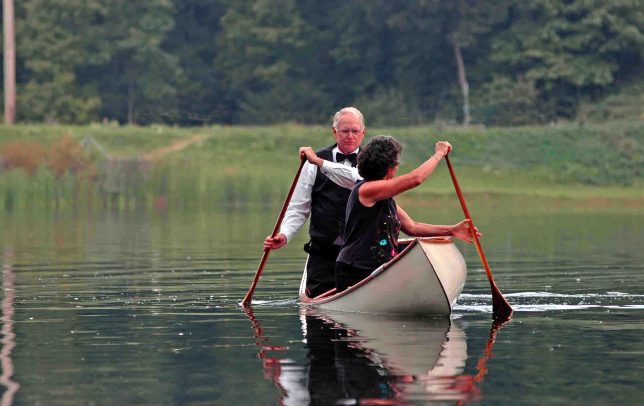
Controlling heel and pitch, and carving, are important tools that the advanced paddler can employ to enhance their paddling experience and to become one with their canoe. Mastering the nuances of heel and pitch, along with perfecting the forward stroke can turn an otherwise stressful, challenging stream into a fun, playful day on the river.
